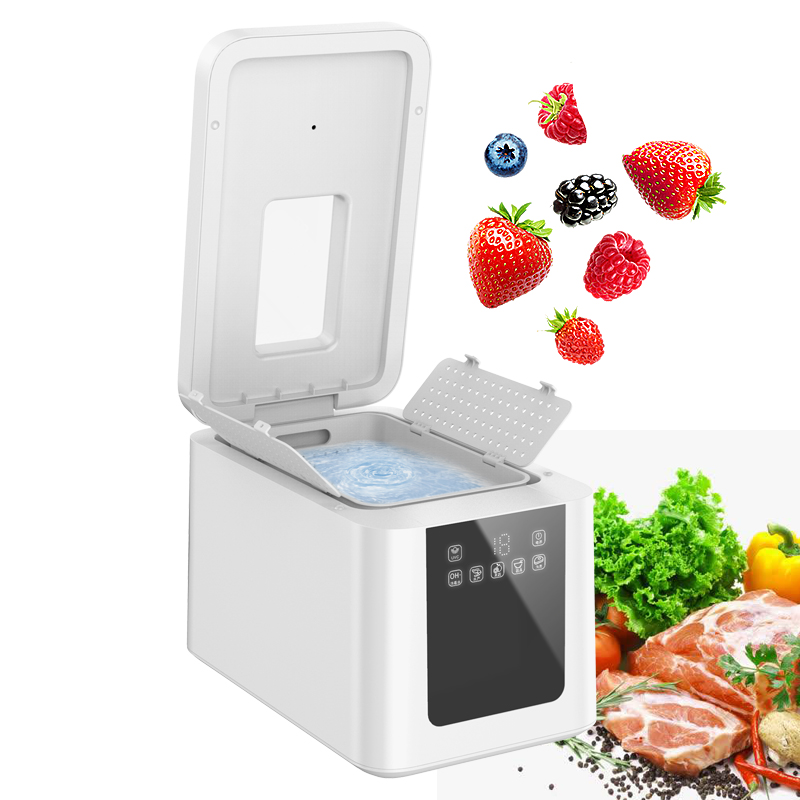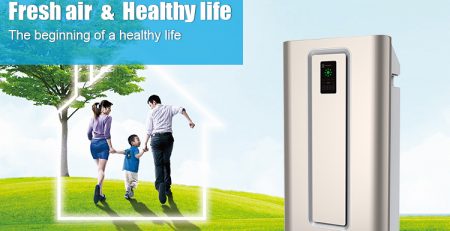Introducing Hypochlorous Acid Electrolyzed Water Disinfectant Machine Work With Salt Water Electrolysis Machine System And Equipments
Words like prevention of infection and disinfection have now become popular and deeply rooted in our daily vocabularies as we all adapt to the new challenges-present and future-posed by the emergence of the global COVID-19 pandemic. This has deepened the quest and anxiety for the safest disinfectant for the prevention of infection. In view of several types of researches carried out and focused primarily on the prevention of infection in the food industry and health sector, the use of electrolyzed water for disinfection has strongly caught the attention of researchers and the manufacturing industry.
Electrolyzed water is produced when an electrical current is applied to salt-water solution through a specialized equipment called electrolyzed water disinfectant machine. This process is known as electrolysis. The process of electrolysis breaks down the elements of the salt solution into a non-toxic, powerful detergent and disinfectant which is safer and more effective than chlorine bleach.
Electrolyzed water contains hypochlorous acid (a disinfectant). This acid can destroy fungi, viruses, and bacteria. Electrolyzed water disinfectant machine is popularly used in Japan but is now gaining popularity in the USA and other European countries. The concentration of electrolyzed water can be easily modified and used in various applications namely:
• Hand and footwear sanitizer
• Food safety
• Cleaning and disinfection of frequently touched surfaces like countertops, door knobs, sickbed handrails, and electronic equipment
• Water treatment
• Wash and disinfect wounds
Primarily, electrolyzed water has found huge application in the present fight against coronavirus. For instance, Japanese healthcare workers at the coronavirus testing centers are duly disinfected and sanitized after the end of their shifts with the help of electrolyzed water. It is also being used by frontline healthcare workers. This article introduces electrolyzed disinfectant machine used in generating electrolyzed water used majorly in the healthcare and food industry.
How Does An Electrolyzed Water Disinfectant Machine Works
An electrolyzed water disinfectant machine (EWDM) uses a chemical process called electrolysis to generate electrolyzed water (EW) when connected to an electricity source. Depending on the type of EWDM, electrolytes used in the electrolytic process, and the conditions under which electrolysis occurs, electrolyzed water can be acidic, neutral, and alkaline. Alkaline electrolyzed water is used for drinking. Acidic electrolyzed water is used for disinfection, sterilization, and cleaning.
Electrolyzed water disinfectant machine produces electrolyzed water through an electrochemical reaction which involves the electrolysis of table salt solutions in a specially designed chamber. The chamber contains the anode, cathode, two or more electrolyzer cells, and a diaphragm which separates the cathode and anode. A table salt solution is formed by diluting table salt with tap water. Table salt contains Sodium Chloride (chemical formula as NaCl) and tap water contains Hydrogen and Oxygen (chemical formula as H2O). The electrolysis of the table salt solution can simultaneously produce two forms of water:
• Electrolyzed Water (Acidic)-a solution of Hypochlorous acid (HOCl) generated at the anode with pH of 2.0 to 3.0, ACC(Available Chlorine Concentration) of between 10.0 and 90.0, and ORP (Oxidation-Reduction Potential) of less than 1100 mV.
• Alkaline Electrolyzed Water-a solution of Sodium Hydroxide (NaOH) generated at the cathode with pH of 10.0 to 13.0, and an ORP of between -800mV to -900mV
When connected to a source of electricity, the table salt solution flows through the electrolysis chamber designed for the separation of the acidic and alkaline products produced in the electrolyzed water disinfection machine. In the anode chamber of the electrolyzed water disinfectant machine water molecules (from the tap water) and chloride ions (from the table salt) are converted into oxidants of chlorine-Hypochlorous acid, Hypochlorite, and Chlorine gas-while inside the cathode chamber of the electrolyzed water disinfectant machine, NaOH (Sodium Hydroxide) is produced.
The defining factor in producing a strong disinfectant is forming a more acidic Hypochlorous acid with pH of 5.5-6.0. HOCl is an oxidant and it is less acidic when produced. The pH of 2.0 to 3.0 can be increased for it to be more acidic by adding hydroxide ion (at the right concentration) produced in the cathode chamber to produce a solution containing HOCl and NaOH. For an electrolyzed water with pH of 5.5 to 6.0, most of the ions (about 90%) contained in the solution are Hypochlorous acid ions with a high ORP of at most 1000 mV. The pH of the electrolyzed water produced is monitored through a pH test kit
At this range of pH, the electrolyzed water produced (a solution of Hypochlorous acid) has a relatively strong oxidation potential and shows significantly high anti-microbic activity. This makes the disinfecting ability of electrolyzed water much effective compared to house hold bleach (Sodium Hypochlorite). Hence, electrolyzed water destroys parasites, fungi, bacteria, and virus faster.
Hypochlorous acid is harmless and naturally exist in human blood as a potent biological oxidant produced by human white blood cells to fight against pathogens.
What You need To Know About Electrolyzed Water Produced by The Disinfectant Machine
Electrolyzed water has been widely used recently as a substitute for chlorine-based disinfectants, as well as sanitizers. Several research around electrolyzed water have deepened its application in various sectors-food industry, environmental and healthcare-as indicated below:
• Electrolyzed water has strong anti-bacterial effect on pathogens found on raw agri-food products.
• Electrolyze water are used as disinfectants in reducing microbial infections in fresh fruits, vegetables, cutting boards, surfaces for processing of food, shell eggs, and poultry carcasses.
• The electrolyzed water disinfectant machine is relatively inexpensive and simple to operate
• The production of electrolyzed water is eco-friendly as it requires only table salt and water.
• Electrolyzed water are known to kill spores of bacteria, fungi, and viruses more effectively than chlorine bleach by destroying the inner membrane of these micro-organisms, thus preventing them from germinating.
Drawbacks
• Electrolyzed water cannot be stored for long because it loses its effectiveness fairly quickly. Over a period of time it turns back to ordinary water.
• Electrolyzed water disinfectant machines could be expensive, however these machines are not necessarily costly.
• In some cases, the process of electrolysis have to be regularly checked for the right concentration or pH.

Conclusion
The use of electrolyzed water disinfectant machines to produce electrolyzed water has proven to be effective as a disinfectant compared to other chlorine-based sanitizers and disinfectants. Stop purchasing chemicals for disinfecting and cleaning. Save money by using an electrolyzed water disinfectant machine that is environmentally friendly. The disinfectant produced by this machine is Hypochorous acid (HOCl). It is safe, non-irritant and harmless if accidentally ingested.For more about hypochlorous acid electrolyzed water disinfectant machine work with salt water electrolysis machine system and equipments,you can pay a visit to Olansi China at https://www.olansichina.com/disinfectant-water-machine.html for more info.


